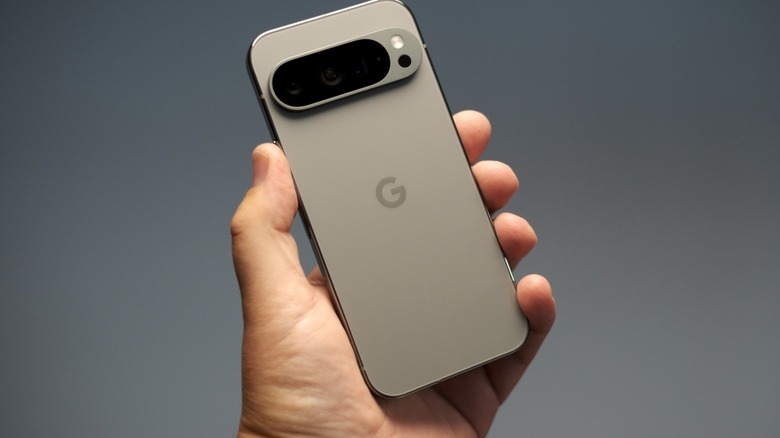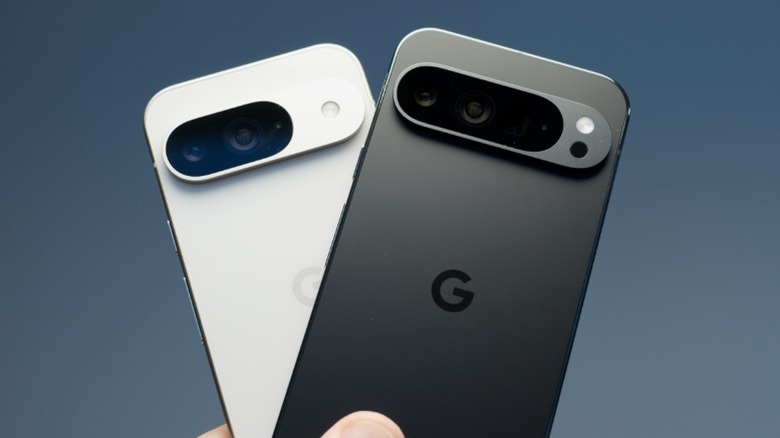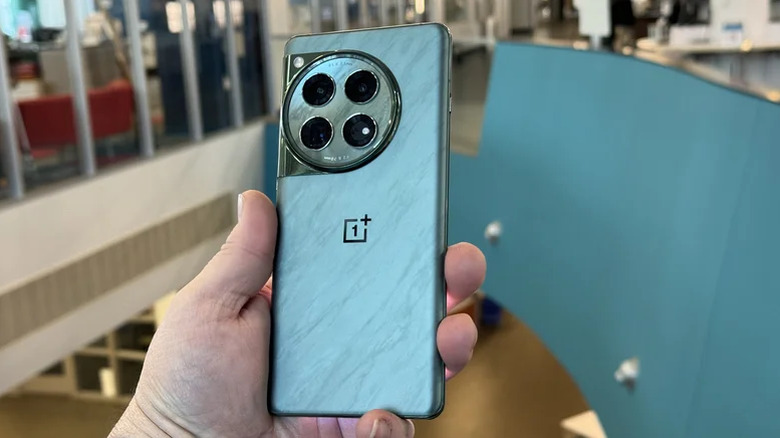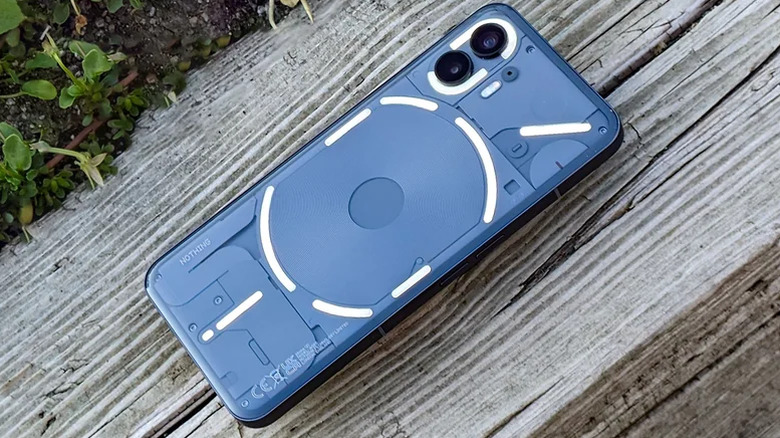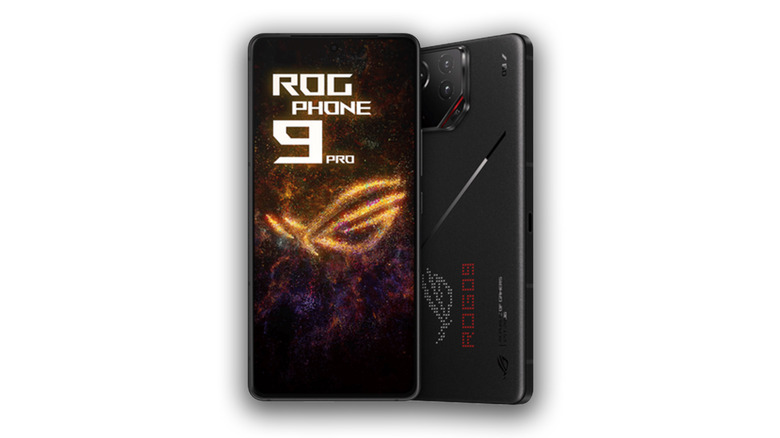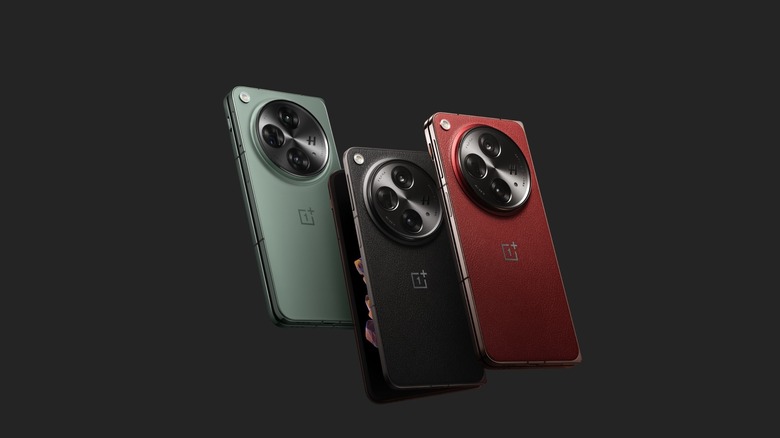5 Of The Best Non-Samsung Android Phones You Can Buy
We may receive a commission on purchases made from links.
Samsung is the world's largest smartphone vendor, according to Statista, and it's likely that you have heard nothing but praise for its devices in recent years, especially the Samsung Galaxy S24 Ultra. However, a benefit of not being as constrained as iOS is the fact that Android comes in various flavors, from different manufacturers, and at every price point. Each manufacturer throws its own skin on top of Android and bundles in exclusive features.
While Samsung itself boasts a wide catalog of devices, some people might not enjoy the One UI skin, or could find the designs of most current-gen Samsung phones uninspiring and similar. Thankfully, worthwhile competition from brands like OnePlus, Google, Asus, and others means options go far beyond a Samsung Galaxy.
For this list, we've stuck with smartphones that feature premium specifications — but don't worry, there is a healthy selection of budget friendly Android phones as well. From a device that folds in half, to a smartphone geared towards gaming, here are some of the best Android phones you can buy that aren't made by Samsung. We've based our list on reviews from experts in the industry, and you can find out more about our methodology at the end of this read.
Google Pixel 9 Pro
Amidst countless forgotten Google products that tend to get shelved, the Pixel lineup of devices has surprisingly stuck around. Being manufactured by the same company that develops Android has its benefits, including day one software updates and an experience devoid of any bloatware. The Pixel 9 Pro rivals the likes of the iPhone and Galaxy S24 Ultra, and features a 6.3-inch 120 Hz OLED display, capable of soaring way up to 3,000 nits of peak brightness.
Our review of the Google Pixel 9 Pro talks about its excellent and reliable-as-ever camera setup, and how the suite of AI features hopes to add value to an already mature operating system. For big phone lovers, the 6.8-inch screen of the Pixel 9 Pro XL, and its bigger battery, should bring an enjoyable media consumption experience. Both phones are powered by Google's in-house Tensor G4 chip, which, while not known for the highest of numbers in synthetic benchmarks, still offers one of the smoothest ways to enjoy Android.
Google promises up to seven years of Android updates for its Pixel 9 series, which, alongside 16GB of RAM, should help with future-proofing. The smaller Pixel 9 Pro starts at $999, and you can max these devices up to a terabyte of storage. You also get access to a year's worth of Gemini Advanced for free, so at least you get to experience all the AI features before handing out a separate subscription fee to Google.
OnePlus 12
Since the brand's inception in 2014, OnePlus phones have never skimped out on their internals. The OnePlus 12 is a similar story, and packs in performance that matches flagships from Samsung and Apple — all the while undercutting most premium smartphones by a decent margin. Pricing starts at $799, for which you get 12GB of RAM and 256GB of storage, with an option to double the internal capacity and bump the RAM to 16GB.
The Snapdragon 8 Gen 3 under the hood delivers enough power to run demanding titles like "Genshin Impact" smoothly. The OnePlus 12 also sports one of the most impressive smartphone displays — a 2K 120 Hz LTPO panel with an insane peak brightness of 4,500 nits. The phone runs on top of OxygenOS, which is an interface that has garnered a name for being snappy, despite slowly straying away from the look and feel of stock Android over the years.
As explored in our review of the OnePlus 12, the 5,400 mAh battery makes this a two-day phone, and OnePlus' signature fast charging technology means you'll be able to top it back up in just minutes. Cameras have always been a sensitive topic for OnePlus smartphones, and while the OnePlus 12 isn't coming on top of other flagships, it has a commendable setup consisting of wide, ultrawide, and periscope sensors.
Nothing Phone 2
Starting out humbly with a pair of transparent wireless earbuds, Nothing now manufactures a variety of products, including smartphones. The Nothing Phone 2 prides itself on being a looker, thanks to the glyph interface and a unique see-through back panel. The front of the smartphone houses a 6.7-inch 120 Hz OLED display.
To achieve its price tag of $599 while maintaining high-end specifications, the Nothing Phone 2 opts for an older Snapdragon 8+ Gen 1 processor and 8GB of RAM, which is upgradable to 12GB alongside extra storage. We tested games like "Call of Duty: Mobile" and "Asphalt 9" in our review of the Nothing Phone 2, and the device managed to keep up without dropping any frames.
An unintended advantage of being a smaller brand is the fact that Nothing hasn't spent copious resources on designing a heavy layer on top of Android. Nothing OS sticks close to how Google envisioned Android, but doesn't shy away from adding a touch of personality in the form of widgets and subtle UI tweaks. Despite being launched a while ago in 2023, there is nothing (pun intended) quite like this device, unless you're fine with the less powerful yet newer Phone 2a and 2a Plus. The rumored Nothing Phone 3 should follow the same principles and offer a unique way to experience Android.
Asus ROG Phone 9 Pro
While any modern smartphone with relatively decent specifications can handle games, there exists a niche for dedicated gaming handsets — and the Asus ROG Phone 9 Pro is the latest in the series. It builds on top of its predecessor and brings upgrades under the hood. The phone is powered by the new Snapdragon 8 Elite SoC, and comes with 16GB of RAM and 512GB of storage. The phone will start at $1,199 and is slated for release in early 2025.
Where most phones max out at 120 Hz, the ROG Phone 9 Pro takes its refresh rate all the way up to 185 Hz. With a peak brightness of 2,500 nits, the 6.78-inch AMOLED screen of the ROG Phone 9 Pro should suffice any content consumption needs as well. Asus has been trying to refine the ROG Phone ever since its inception, such that it doesn't cater to just gamers. The ROG Phone 9 Pro has a 50-megapixel primary shooter, and as highlighted in TechRadar's review the six-axis gimbal stabilizer helps capture sharp images even in poorly lit environments.
Gamer-specific features of the phone include two ultrasonic buttons on the side that can replicate the R2 and L2 trigger buttons in games that support customizable controls. You also get a secondary USB-C charging port and a grid of LEDs dubbed "AniMe Vision" at the back that can be used to display text, GIFs, and even interactive games.
OnePlus Open
Despite myths surrounding foldable smartphones, we've been seeing more options in the market than ever before. The OnePlus Open is the company's first foldable, and reviewers everywhere have had nothing but praise for its combination of premium hardware and thoughtful software. The device starts at $1,699 and comes with 16GB of RAM and half a terabyte of storage.
Powering the OnePlus Open is the Snapdragon 8 Gen 2 chipset, while the circular camera housing features a triple-lens setup. The cover display is a 6.31-inch AMOLED 120Hz panel, which is just as useful as any other slab-style phone. The nearly square 7.82-inch display on the inside boasts a 2K resolution and refreshes at the same smooth 120Hz. Both displays bring 2,800 nits of peak brightness, and feature LTPO technology, allowing them to dynamically adjust the refresh rate to preserve battery.
Tom's Guide praised the OnePlus Open for its overall value proposition, since folding phones don't come cheap. Moreover, OxygenOS brings features like Open Canvas that makes it easier to multitask on the OnePlus Open's display when unfolded. A major omission with this device is the lack of wireless charging, but as explored in our review of the OnePlus Open, it lasts a full day and then some on a single charge, and the 67W fast charging comes in clutch.
How we selected the phones for this list
We've seen some of the best and worst Samsung phones over the years, and while it's true that the company's lineup of devices is stronger than ever before — it would be unfair to turn a blind eye to the dozens of other great releases that happen each year. This list was crafted based on reviews from trusted sources like TechRadar and Tom's Guide. We conduct detailed testing of many smartphones here at SlashGear as well. Major points of consideration include specifications, display quality, and battery life — all of which are factors that differentiate good smartphones from the best ones.
For this list, we picked Android phones that each have something unique to offer. Foldables like the OnePlus Open rival Samsung's own Galaxy Fold series, and bring a new way of interacting with your apps, while phones as pure as the Pixel 9 Pro are proof that you don't need a ton of bells and whistles to attract prospective buyers. Options like the Nothing Phone 2 and OnePlus 12 offer flagship-grade internals for less money, too. Even though the Asus ROG Phone 9 Pro isn't here in the U.S. yet, it's worth waiting for its release in January 2025 since it does bring meaningful improvements over its predecessor.
